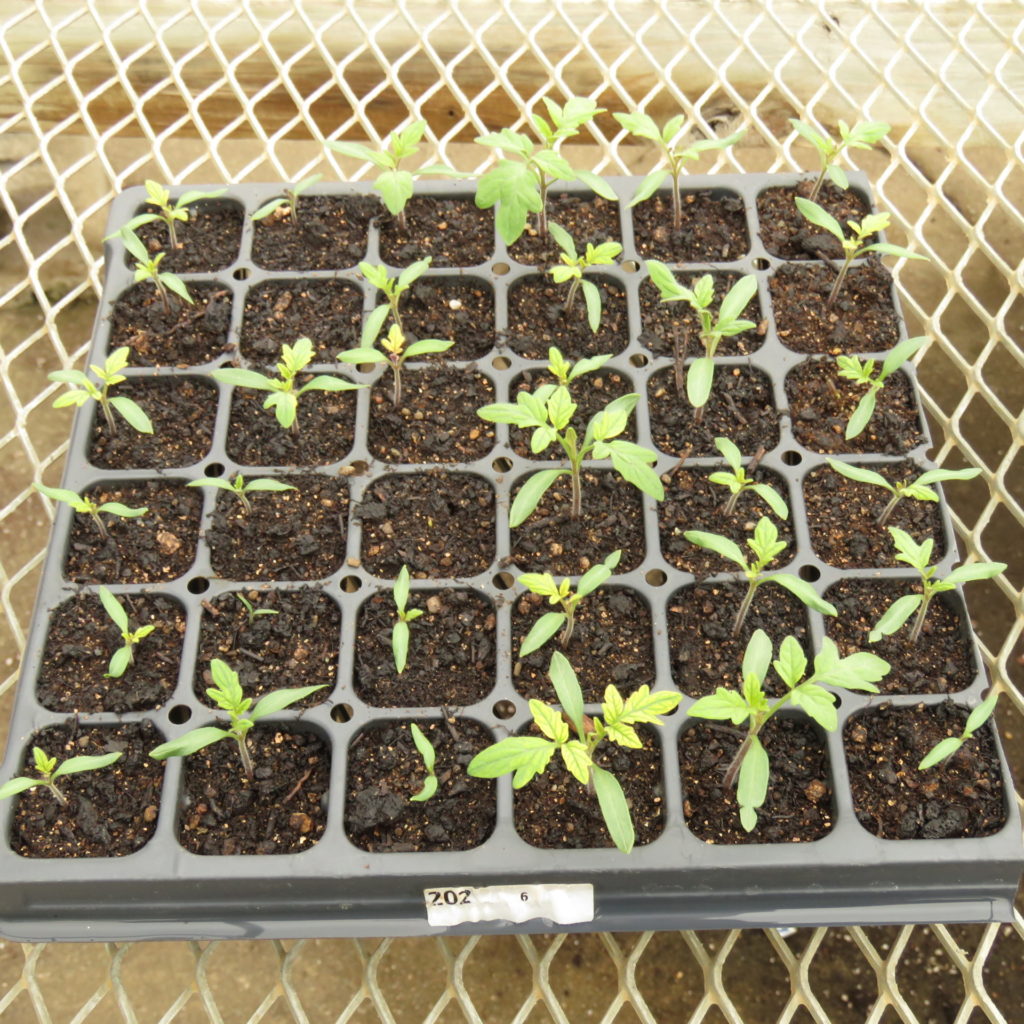Producing healthy transplants is a critical step for a successful growing season. Choosing the proper growing media is an important first step. Supported by a USDA Specialty Crops Block Grant through the Indiana State Department of Agriculture, researchers from Purdue have been evaluating different organic growing media with and without adding supplemental organic fertilizers for tomato and cucurbit transplant production.
In this article, we have highlighted a few transplant symptoms that are associated with growing media with excessively high or low electrical conductivity (EC) or pH. It is always a good idea to test EC, pH, and other important nutrient content of a medium when you are making your own or using an unfamiliar media. Most soil laboratories provide a saturated media extract test that provides information on these important parameters. More information about this test and suggested range of EC and pH can be found in this article http://www.soiltest.uconn.edu/factsheets/InterpSMEGreenMedia.pdf
Many of these abnormal symptoms may be caused by disease or insect damage. It is always a good idea to send unusual plant symptoms to the Purdue University Plant and Pest Diagnostic Laboratory for an official diagnosis.
Uneven seed germination
The above tomato tray had uneven and delayed seed germination (Figure 1). This was observed in a treatment that we excessively fertilized with an organic product. This resulted in high electrical conductivity (EC) of the medium. High EC suppresses seed germination. This effect is more pronounced for tomato seeds than cucurbit seeds.
Plant wilt
The above wilt symptom (Figure 2) was observed when watermelons were grown in an excessively fertilized medium. When plants were removed from the medium, a brown discoloration was observed on the base of the plants. There was little root growth. The symptom shown above can easily be confused with an infectious disease. We were not able to isolate any pathogens from the seedlings. However, seedlings damaged as above can be infected by many different types of fungi that cause damping-off.
Chlorosis and stunted growth on new leaves
The above two phictures (Figure 3) show tomato and cucumber seedlings grown in a medium with high pH and EC. The high soil pH led to unbalanced plant nutrient uptake, resulting in chlorosis on new leaves. For the cucumber seedling, we also observed stunted and misshapen new leaves, which might be caused by high EC. These symptoms, particularly misshapen leaves, can be confused with symptoms caused by insect damage or virus diseases.
Necrosis on old leaves
The above photos (Figure 4) show watermelon seedlings with necrosis on cotyledon (seed leaves) and older true leaves. Both plants were grown in a greenhouse for three weeks. The left plant was grown in a medium with very low fertility. The right plant was grown in a medium that was excessively treated with organic fertilizers. Although it is not surprising to observe seedlings develop necrosis with age, those grown in poor media are likely to develop these symptoms early. Necrosis can also be caused by several pathogens. Usually, symptoms caused by an infectious disease can be observed to spread. However, symptoms caused by a poor medium are likely to be more uniformly distributed.



